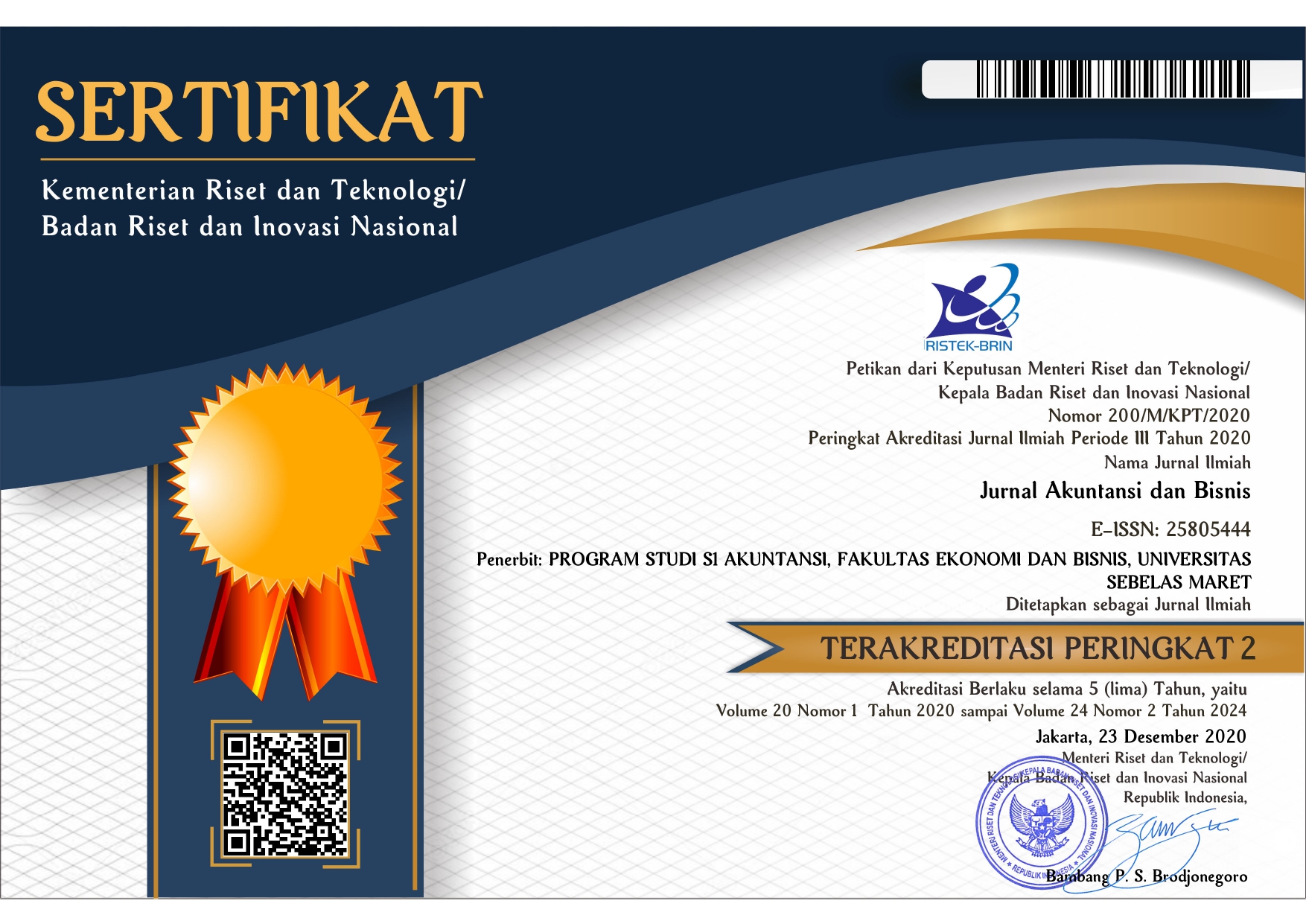Apakah Penyesuaian Laporan Keuangan Kedalam Metode Alternatif Diperlukan pada Analisis Rasio Keuangan?
Abstract
References
Baridwan, Zaki. 2004. Intermediate Accounting. Edisi 8. Yogyakarta: BPFE.
Bank Indonesia (BI). 2004. Statistik Ekonomi Keuangan Indonesia. Vol. VI. No. 12.
Bowen, Robert M, Larry DuCharme, dan D Shores. 1995. “Stakeholders’ Implicit Claims and Accounting Method Choice.” Journal of Accounting and Economics. Vol. 20.
Christie, Andrew A, dan Jerold L. Zimmerman. 1994. “Efficient and Opportunistic Choices of Accounting Procedures: Corporate Control Contests.” The Accounting Review. Vol. 69. No. 4.
FASB. 1978. Statement of Financial Accounting Concepts. Connecticut.
Foster, George. 1986. Financial Statement Analysis. Edisi 2. New Jersey: Prentice-Hall.
Houltausen, R. 1990. “Accounting Method Choice: Opportunistic Behavior, efficient Contracting, and Information Perspectives.” Journal of Accounting and Economics. Vol. 12.
IAI. 2002. Standar Akuntansi Keuangan Indonesia. Jakarta: Salemba Empat.
Machfoedz, Mas’ud. 1994. “Financial Ratio Analysis and Predictionof Earnings Changes in Indonesia.” Kelola. No. 7. Vol. III.
Neter, John, William Wasserman, dan G. A. Whitemore. 1993. Applied Statistics. Edisi 4, Boston: Allyn and Bacon.
Scott, William R. 1997.Financial Accounting Theory. New Jersey: Prentice-Hall.
Sondakh, Julie Jeanette. 1993. Faktor-Faktor Yang Mempengaruhi Pada Pemilihan Metode Depresiasi. Thesis S-2. Fakultas Pasca Sarjana. Universitas Gadjah Mada.
Suwardjono. 2005. Teori Akuntansi: Perekayasaan Pelaporan Keuangan. Edisi 3, Yogyakarta: BPFE.
Watts, Ross L, dan Jerold L. 1986. Zimmerman. Positive Accounting Theory. New Jersey: Prentince Hall.
White, Gerald I, Ashwinpaul C Sondhi, dan Dov Fried. 1997. The Analysis and Use of Financial Statements. Edisi 2. New York: John Wiley & Sons, Inc.
Wolk, Harry I, Michael G. Tearney, dan James L. Dodd. 2001. Accounting Theory: A Conceptual and Institutional Approach. Cincinnati: South-Western College Publishing.
DOI: http://dx.doi.org/10.20961/jab.v7i1.57
Jurnal Akuntansi dan Bisnis (JAB)
ISSN 1412-0852 (print), 2580-5444 (online)
Published by Accounting Study Program, Faculty of Economics and Business, Universitas Sebelas Maret, Indonesia

JAB on http://jab.fe.uns.ac.id/index.php/jab is licensed under a Creative Commons Attribution-ShareAlike 4.0 International License










